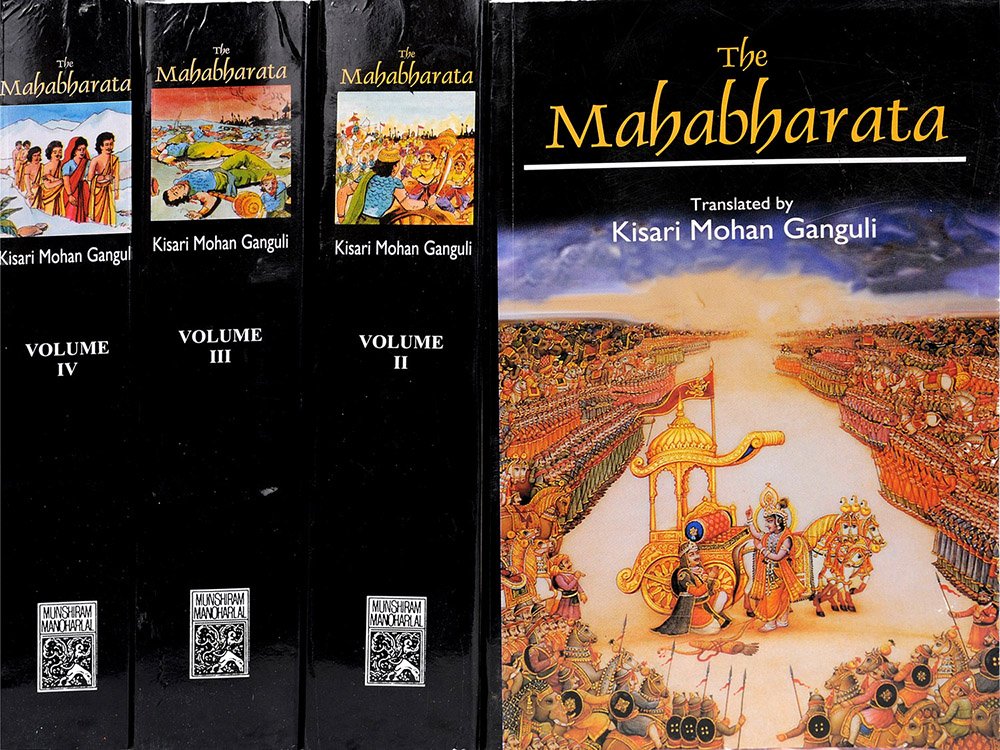Mahabharata (English)
by Kisari Mohan Ganguli | 2,566,952 words | ISBN-10: 8121505933
The English translation of the Mahabharata is a large text describing ancient India. It is authored by Krishna-Dwaipayana Vyasa and contains the records of ancient humans. Also, it documents the fate of the Kauravas and the Pandavas family. Another part of the large contents, deal with many philosophical dialogues such as the goals of life. Book...
Section XIV
"Salya said,
'Then the goddess of Divination stood near that chaste and beautiful lady.
And having beheld that goddess, youthful and lovely, standing before her, Indra’s queen, glad at heart, paid respects to them and said,
'I desire to know who you are, O you of lovely face.'
And Divination said,
'I am Divination, O goddess, come near you. Since you are truthful, therefore, O high-minded lady, do I appear in your sight. Since you are devoted to your lord, employed in controlling thyself, and engaged in the practice of religious rites, I shall show you the god Indra, the slayer of Vritra. Quickly come after me, so may good betide you! You shalt see that best of gods.'
Then Divination proceeded and the divine queen of Indra went after her. And she crossed the heavenly groves, and many mountains; and then having crossed the Himavat mountains, she came to its northern side. And having reached the sea, extending over many yojanas, she came upon a large island covered with various trees and plants. And there she saw a beautiful lake, of heavenly appearance, covered with birds, eight hundred miles in length, and as many in breadth. And upon it, O descendant of Bharata, were full-blown lotuses of heavenly appearance, of five colours, hummed round by bees, and counting by thousands.
And in the middle of that lake, there was a large and beautiful assemblage of lotuses having in its midst a large white lotus standing on a lofty stalk. And penetrating into the lotus-stalk, along with Sachi, she saw Indra there who had entered into its fibres. And seeing her lord lying there in a minute form, Sachi also assumed a minute form, so did the goddess of divination too. And Indra’s queen began to glorify him by reciting his celebrated deeds of yore.
And thus glorified, the divine Purandara spoke to Sachi,
'For what purpose hast you come? How also have I been found out?'
Then the goddess spoke of the acts of Nahusha.
And she said,
'O performer of a hundred sacrifices, having obtained the sovereignty of the three worlds, powerful and haughty and of a vicious soul, he has commanded me to visit him, and the cruel wretch has even assigned me a definite time. If you will not protect me, O lord, he will bring me under his power. For this reason, O Indra, have I come to you in alarm. O you of powerful arms, slay the terrible Nahusha of vicious soul. Discover thyself, O slayer of Daityas and Danavas. O lord, assume your own strength and rule the celestial kingdom.'"
Conclusion:
This concludes Section XIV of Book 5 (Udyoga Parva) of the Mahabharata, of which an English translation is presented on this page. This book is famous as one of the Itihasa, similair in content to the eighteen Puranas. Book 5 is one of the eighteen books comprising roughly 100,000 Sanskrit metrical verses.
FAQ (frequently asked questions):
Which keywords occur in Section XIV of Book 5 of the Mahabharata?
The most relevant definitions are: Indra, Sachi, Nahusha, Salya, Vritra, Himavat; since these occur the most in Book 5, Section XIV. There are a total of 12 unique keywords found in this section mentioned 20 times.
What is the name of the Parva containing Section XIV of Book 5?
Section XIV is part of the Udyoga Parva which itself is a sub-section of Book 5 (Udyoga Parva). The Udyoga Parva contains a total of 41 sections while Book 5 contains a total of 4 such Parvas.
Can I buy a print edition of Section XIV as contained in Book 5?
Yes! The print edition of the Mahabharata contains the English translation of Section XIV of Book 5 and can be bought on the main page. The author is Kisari Mohan Ganguli and the latest edition (including Section XIV) is from 2012.
